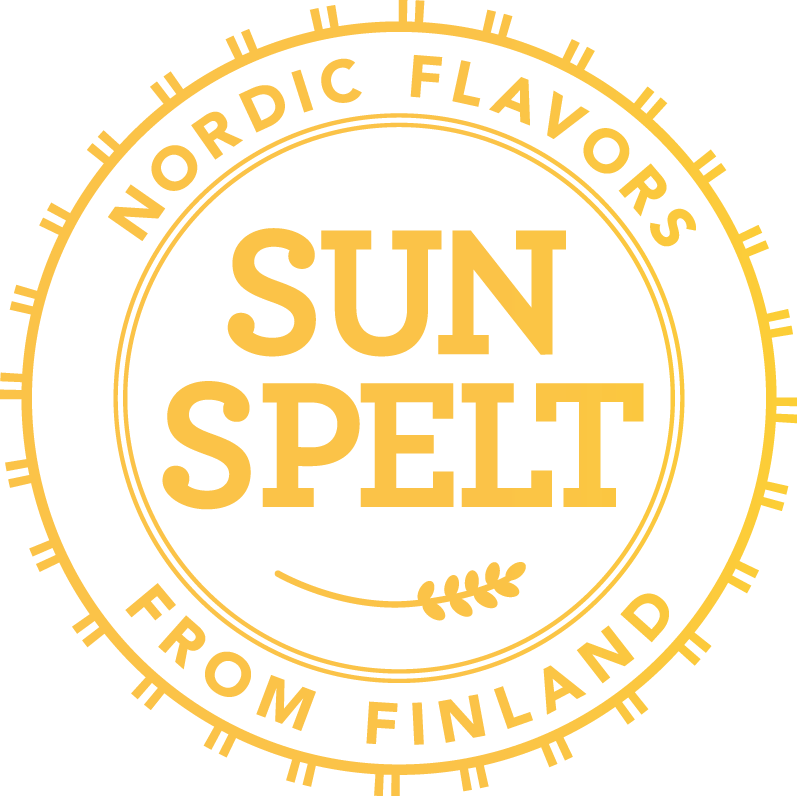What is spelt?
Spelt is an unrefined species of wheat dating back some 10,000 years. Several ancient cultures used spelt for their nourishment in significant amounts. It is said that the army of the pharoahs of Egypt was long invincible because of spelt; that Alexander the Great conquered the world with troops powered by spelt; and that Roman emperors could not have ruled vast kingdoms without spelt; and in the Middle Ages, the monasteries of Europe taught that spelt could heal the sick. This is indeed, a super food!
Spelt spread to the Balkan Peninsula and around Europe from the Near East during the Bronze Age. Today, spelt is still in production in certain areas of Gemrany and in Switzerland. In Finland, about 2,000 hectares (5000 acres) are devoted to growing spelt.
To this day, spelt has retained its original, unique consistency. Spelt is good for both man and the natural cycle of life.
The nutritional requirements of spelt are modest, making it easily adaptable to the ecological cycle of nature and especially suitable for organic farming: spelt grows well even in poor soil without fertilization. In Finland, the growth of spelt extends quite far north, into the Oulu region. Though some say that spelt yields are typically lower than that of wheat, experience has shown that, when cultivated with skill, spelt can also produce amazing yields. Furthermore, it is also good for nature: when there is no need for fertilization, there is less burden on the environment.
The spelt kernel is tightly covered by a tough outer husk, and therefore is better protected against air pollution than the common wheat kernel. The whole of the spelt grain can be used as an excellent, flavorful and valuable food.
In Finland, spelt is grown on biodynamic or organic farms, and is always non-GMO.
Who is spelt for?
As an uncultivated grain, spelt has retained its original composition throughout the history. This makes it a natural food for both humans and animals. It is rich in B-vitamins that play an important role in human metabolism and in the operation of the nervous system. Spelt contains amino acids that the body needs, and 13-18% protein by weight. Spelt is also rich in various minerals, micronutrients and fiber.
Nowadays spelt is making a strong comeback as tasty and trendy grain providing new cooking ideas and experiences for many. Spelt has excellent nutritional properties combined with a full, rich and soft taste. This is why both home cooks and professional kitchens are spelt increasingly using spelt.
Spelt is not suitable for celiacs. However, many people with grain and wheat allergy can use spelt, because it’s gentler for the body when compared to other grains. In addition, because of its enhancing effect on metabolism, spelt is especially well-suited for people who suffer from gastro-intestinal problems. Spelt is easily digestible and the body can absorb it well. The fiber structure of spelt activates the function of the stomach and the intestines by helping to remove waste products from the body.
As the nutrients of spelt are steadily released for use in the body, spelt keeps blood sugar stable and the feeling of hunger is kept away for a long time. Spelt also suppresses the craving for sweets and helps maintain energy. Therefore, spelt is a good choice for diabetics and people struggling with weight control.
Whole grains can be used to replace rice in side dishes, casseroles and soups. You can sprout spelt for grass as you would wheat. Spelt flakes are used in porridges, rolls and cooking. Spelt semolina can be made into tasty desserts; and spelt bran s perfect for yogurts, smoothies, or adding to bread.
Let spelt be part of your well-balanced diet, and notice how it helps to improve the overall well-being of your body.

